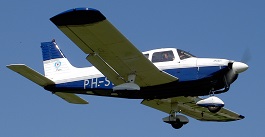In Jane’s last year in high school she gets pilots licenses, first on an airplane, then on a helicopter.
The airplane was the Piper Archer, a very popular single engine reciprocating engine aircraft. It is easy to pilot, and so often used in pilot training schools as well as civilian life. (Click the image for more information.)
 Jane then took lessons in a Robinson R66 five-seater helicopter. (Click the image for more information.)
Jane then took lessons in a Robinson R66 five-seater helicopter. (Click the image for more information.)
______________________________________________________
During the summer between Jane’s first and second year at the US Air Force Academy she took advantage of the Academy’s off-site enrichment program to spend several weeks at Laughlin Air Force Base in southwest Texas. There she got licenses in four different kinds of aircraft.
The first was the basic trainer, the T-6A Texan II. (Click image for more info.)
The second was the Shadow Hawk, the successor to the Air Force’s Pave Hawk. (Click image for more info.)
 The third was the T-1A Jayhawk, a small passenger/cargo business jet. (Click image for more info.)
The third was the T-1A Jayhawk, a small passenger/cargo business jet. (Click image for more info.)
 The fourth was the T-50A Fighting Eagle, a joint project by Lockheed-Martin and Korean Aerospace Industries. (Click image for more info.)
The fourth was the T-50A Fighting Eagle, a joint project by Lockheed-Martin and Korean Aerospace Industries. (Click image for more info.)

______________________________________________________
The events of Orphan take place about ten years from now. There is a space station put up by a commercial consortium. It is visited regularly by Earth-based spaceplanes, as seen in the scene below. It spins to give visitors gravity equal to about that of the Moon. This is enough to keep them from the dangers that go with staying in zero gravity for very long. (Click image for a larger view.)
 ______________________________________________________
______________________________________________________
Luna City was created from prefab parts shipped to the Moon plus local materials. These parts include bricks made by industrial 3D printers from Moon rocks and dirt. The construction was done by robots operated remotely by engineers on Earth using virtual/augmented reality headsets. The robots have to be very smart as it takes a minimum of 2.6 seconds to five or more seconds for round-trip communication between Earth and the Moon. Not good when you are remotely driving a Lunar rover and suddenly have to put on the brakes!
The city was made by finding a medium-large crater, constructing the city in it, then covering it over with a layer of Lunar material. The layer protects the city from meteoroids and extremes of heat and cold. Once made and powered up and filled with air the interior is made livable by adding plants. These help maintain air and (just as important) provide welcome relief from the drabness and utilitarian nature of the city.
Click image for a larger view



